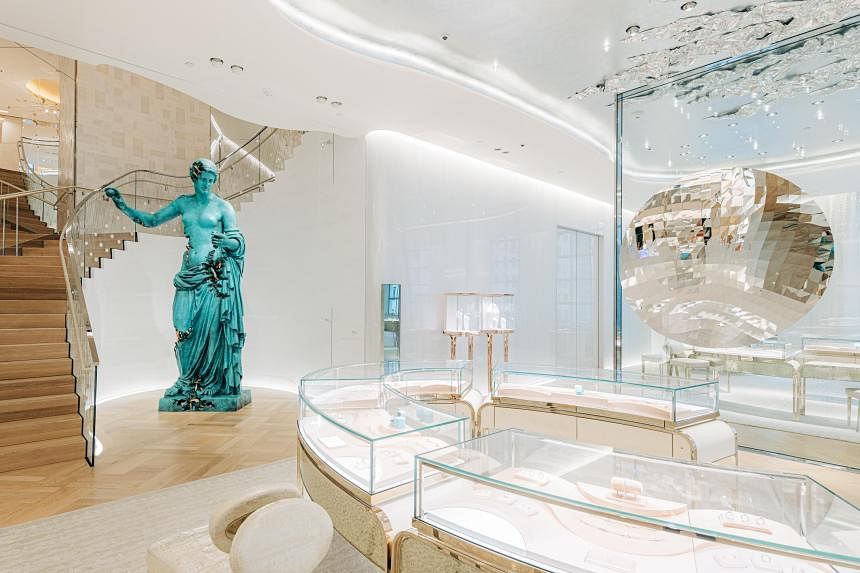NEW YORK – Now that tickets to the Museum of Modern Art are an astonishing US$30 (S$41) apiece, you could be forgiven for timing your visits carefully, making sure that they count.
So, let us say you find yourself in midtown Manhattan with an hour or two to spare, and you are yearning for some culture. Perhaps you have seen MoMA’s latest exhibitions, or you are not quite in the mood to fork out that kind of money. May I instead suggest stopping by Tiffany & Co’s flagship store in Fifth Avenue?
There are no Demoiselles d’Avignon or Starry Night there, but what The Landmark (as it is called) does offer is a heady fusion of contemporary art and luxury retailing that is as relevant, and discomfiting, as anything you could hope to find in a museum.
After a renovation by American architect Peter Marino that debuted in April 2023, 58 pieces by major artists that he selected – many of them blue, silver or both – now fill the 84-year-old building.
A colour-shifting James Turrell oval is embedded in a wall near one set of lift doors. Hanging by another is a shiny Damien Hirst cabinet filled with rows of cubic zirconia. Hovering next to the engagement rings is one of Anish Kapoor’s eye-bending mirrored discs.
On the ground floor, 14 arched window frames glow with a state-of-the-art animation by Oyoram Visual Composer, of the Manhattan skyline and Central Park. The city is immaculate, with no people, just birds.
And that giant-size, faux-deteriorated Venus Of Arles with a Tiffany Blue patina? That comes from the mind of Daniel Arsham, who has devoted his career to such banal corporate collaborations. He has designed a limited-edition bracelet and sculpture for the brand, as well as “exclusive Pokemon-inspired jewellery”.
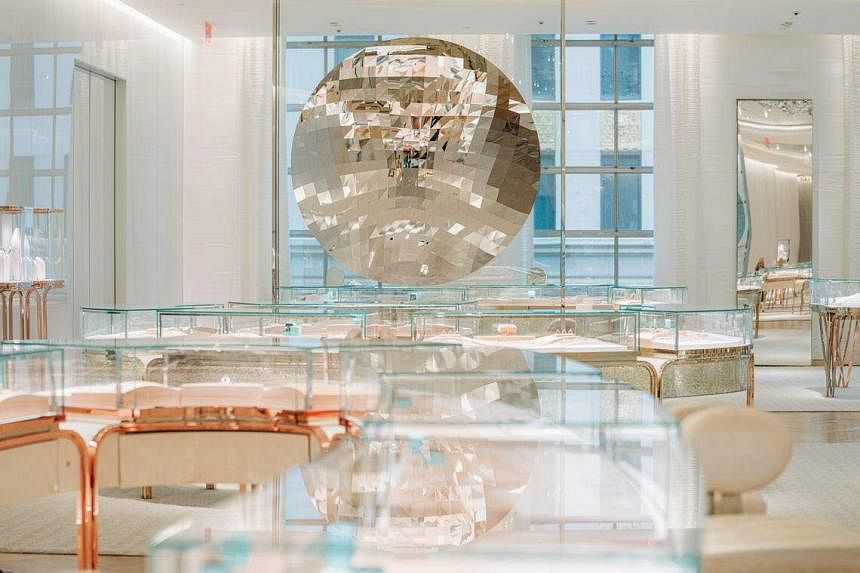
The key work here is Jean-Michel Basquiat’s painting Equals Pi, from 1982, his milestone year. It is high up on a wall on the ground floor, covered by a translucent shield, looking a little forlorn. It has Basquiat’s classic crowns and handwritten text, and its turquoise ground is awfully close to Tiffany’s trademarked colour. When Tiffany executive Alexandre Arnault used it in an advertising campaign with American music stars Beyonce and Jay-Z in 2021, Mr Arnault proposed that the artist may have been making an homage to the brand. Some who actually knew Basquiat were quick to reject that.
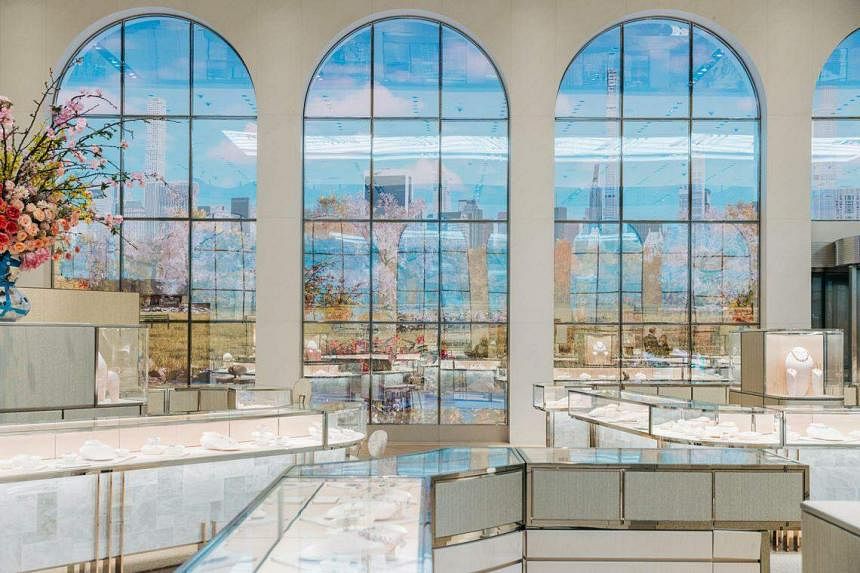
But let us not dwell on conflict. Just about everything in this 10-storey palace is bright, polished, antiseptic and exactly where it should be. There are stunning flower arrangements, stacks of art books and capacious public restrooms. The salespeople are unfailingly polite.
“I’m just poking around,” I told one who asked to help. “Poke away,” he replied.
The atmosphere is subtly disorienting, a bit unnerving, as in a casino or an elite art fair during its early hours. There is money at stake here.
Buyers sip sparkling wine or water as they try on jewellery. Two are being led to a private room, where pastel-coloured macarons might await. Behind one discreet blue velvet rope is a hallway with paintings by Hans Hartung and Jules de Balincourt.
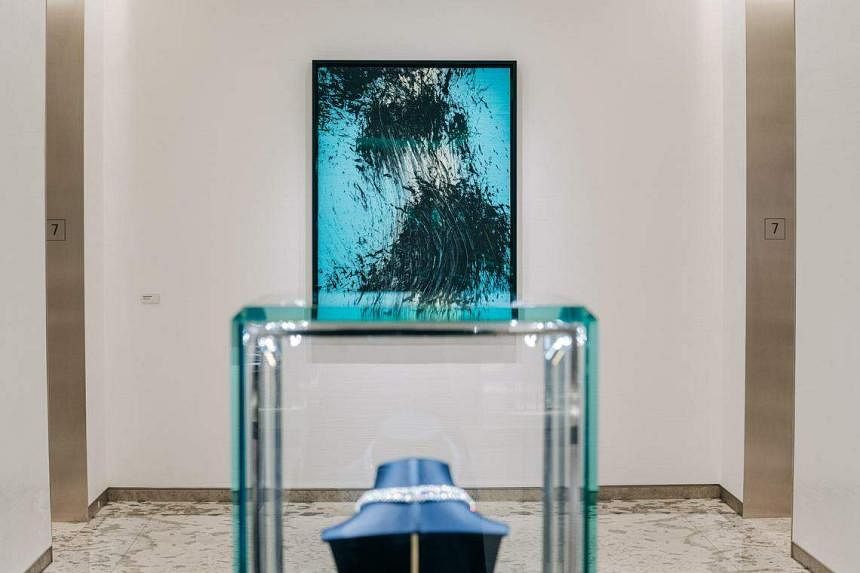
It is tempting to wring one’s hands about this instrumentalisation of high art to sell high-end accessories, but many decades have passed since Mark Rothko cancelled his commission for the lavish Four Seasons Restaurant, reportedly saying that “anybody who will eat that kind of food for those kinds of prices will never look at a painting of mine”. Ideas about art’s purity and the stigma of selling out have less currency today.
In any case, Marino’s Tiffany project follows in a rich tradition. In the 1950s, artists Jasper Johns and Robert Rauschenberg collaborated on window displays for luxury department stores Bergdorf Goodman and Bonwit Teller. They used a pseudonym, but Rauschenberg later had work on view at Bonwit Teller.
In 1970, the Print Collector’s Newsletter quipped that “being a department store gallery is a dubious distinction; it is not quite an insult, but surely not a compliment”, calling it a domain of middlebrow art.
As it happens, much of the art at Tiffany is middling – the sort of adequate, professional things one could find in auction-house day sales or uninspired booths at art fairs anywhere in the world. A brand this rich could have been far more ambitious and daring.
Till May 20, you can have a closer look at Marino’s taste by booking a free ticket to Culture Of Creativity: An Exhibition From The Peter Marino Art Foundation. It is on view in the Tiffany Gallery – an airy space high in the building that was designed by OMA’s Shohei Shigematsu, with excellent views of Billionaires’ Row.
You will find almost 70 more pieces, including intricate, witty 19th-century Tiffany silver; bronze sheep (by Francois-Xavier Lalanne) atop artificial grass; serviceable pieces by artists represented elsewhere in the store (Francesco Clemente, Vik Muniz, Sarah Sze); and many portraits of Marino.
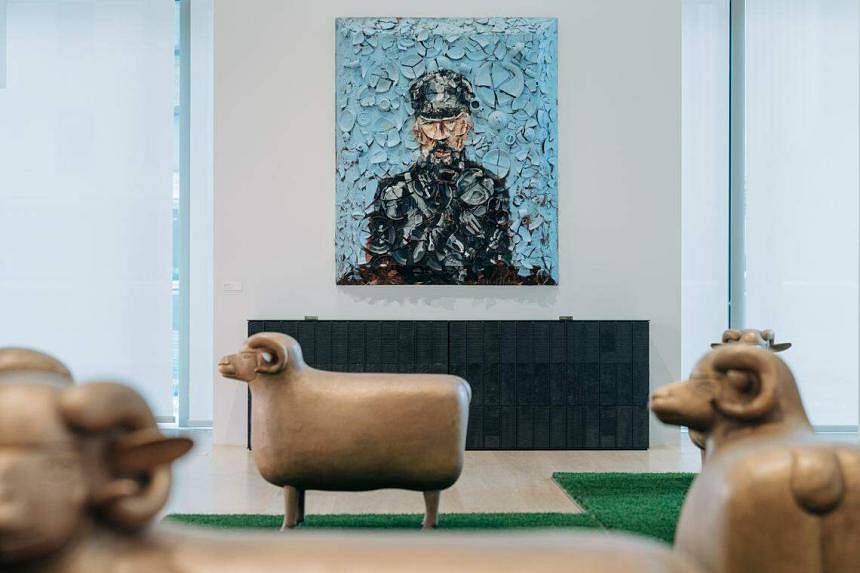
There is one very dark moment that surprised me in the Marino show – a large 1980 Sarah Charlesworth photo, an appropriated image of a man falling from a building. It curiously echoes two grand wall pieces that Rashid Johnson created for the store, as part of his Falling Man series. Johnson’s depictions of pixellated, upside-down (Tiffany Blue) men recall eight-bit video game characters. They are surrounded by mirrored panels that have been scratched and partially cracked, as if smashed by a hammer.
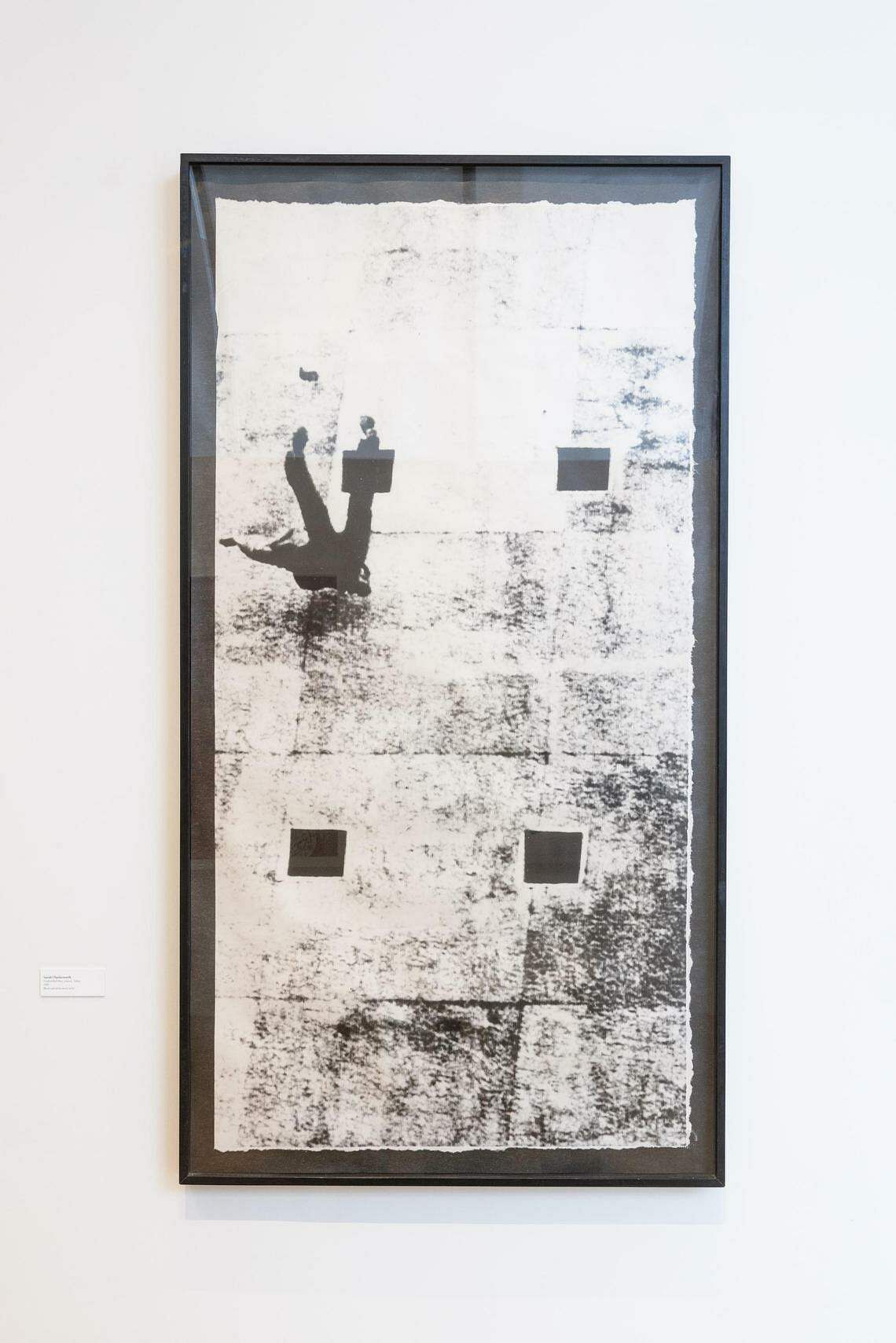
These works are meant to be “existential investigations, meaning the idea of man falling through space, finding himself”, Johnson told an interviewer in 2023. Fair enough. But you could also see them as portraits of a culture intent on self-destruction (or outlines of bodies at a crime scene). Spend time with them, and you may find that their hints of violence stick with you.
You will want to relax after this dizzying experience. The US$30 you have saved will not go too far at the Blue Box Cafe by Daniel Boulud on the sixth floor, where the Breakfast At Tiffany’s menu is US$59 a person (before tax and tip), but you can at least enjoy a glass of champagne as you reflect. Why not order a second, or a third? This moment will not last forever. NYTIMES
